On View
4 Key Elements That Are Very Different About the Newly Rebooted MoMA, Plus Where to Find Your Favorite Masterpieces Now
Here are the biggest ideas animating the new newly designed museum.
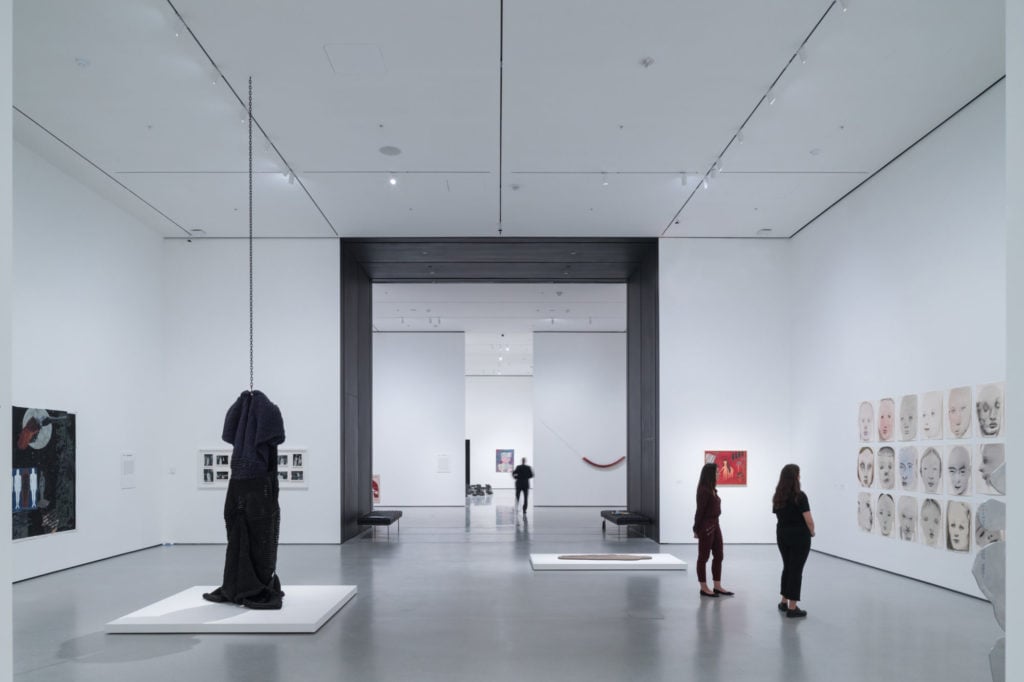
Here are the biggest ideas animating the new newly designed museum.

Artnet News

The Museum of Modern Art is back, and it’s bigger than ever.
MoMA, which was closed to visitors for months as builders and architects executed a $400 million renovation and expansion, has much to offer in its updated home, including a completely reconceptualized installation of the museum’s famed permanent collection, a third of which will be reconfigured every six months. The museum will finally reopen to the public on October 21.
In advance of that signal date, artnet News took an early tour of the august institution to see what it had to offer. With the fleeting nature of time battling the lasting power of great art, here are our snap takeaways from our first visit to the reimagined MoMA.
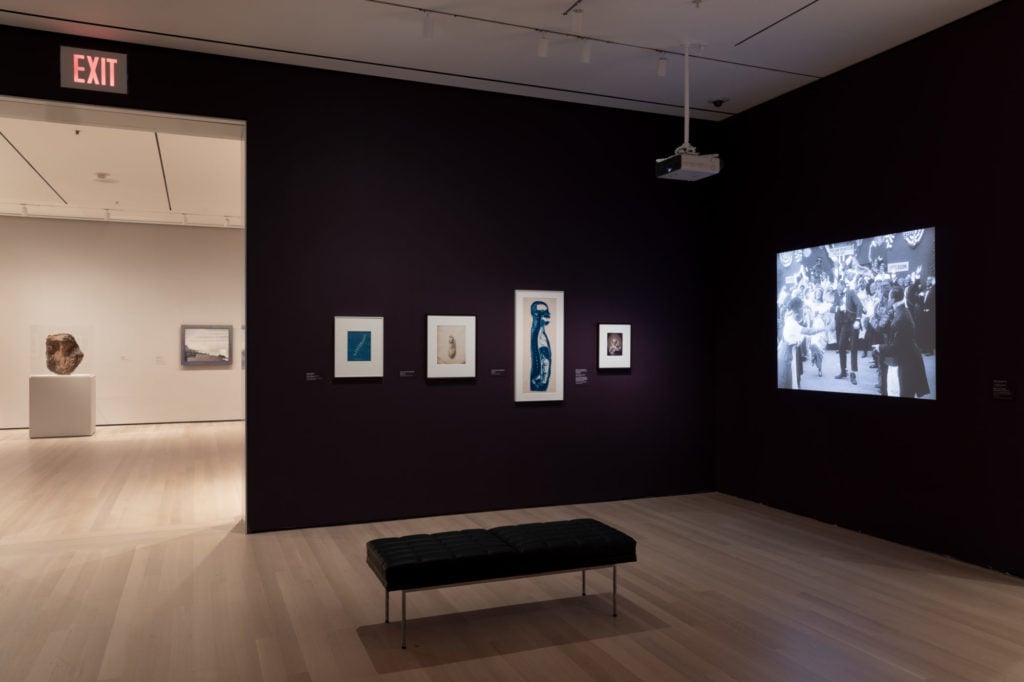
Installation view of the “19th Century Innovators” and “Early Photography and Film” galleries at MoMA. © 2019 The Museum of Modern Art. Photo: Jonathan Muzikar.
Much of the spotlight on MoMA’s next phase has (rightly) focused on the curators’ efforts to break down the collection’s old divisions. To that end, the museum has downplayed the narratives of narrowly defined artistic movements (such as Cubism or Abstract Expressionism) in favor of more inclusive themes (such as “Responding to War” or “City as Stage”).
This shift allows for juxtapositions of works in different media and from different periods, and includes liberal samplings of films alongside works of early Modernism. For instance, there is a position in the galleries from which viewers can see Lime Kiln Club Field Day (1913), a rediscovered American feature film billed as the first to star an all-black cast, and—through the entryway to the next room—Picasso’s Les Demoiselles d’Avignon on the far wall.
But these curatorial mash-ups will probably feel dramatically less jarring to the average visitor than to most anyone in the art establishment. If you’re not already intimately familiar with the canon—as much of MoMA’s tourist-heavy audience is not—you can’t be scandalized by its disruption. And admirable as the rehang is from a canon-reshaping perspective, it now feels like an ultra-refined version of the media-saturated, era-independent free-for-all that is everyday life in 2019.
In a sense, the reinstallation of MoMA adapts the template of the social-media feed to the needs of art history. That game plan may seem radical to art lifers, but it will likely seem like business as usual to the uninitiated. And for the sake of art’s traction in the broader culture, that’s a good thing.
—Tim Schneider
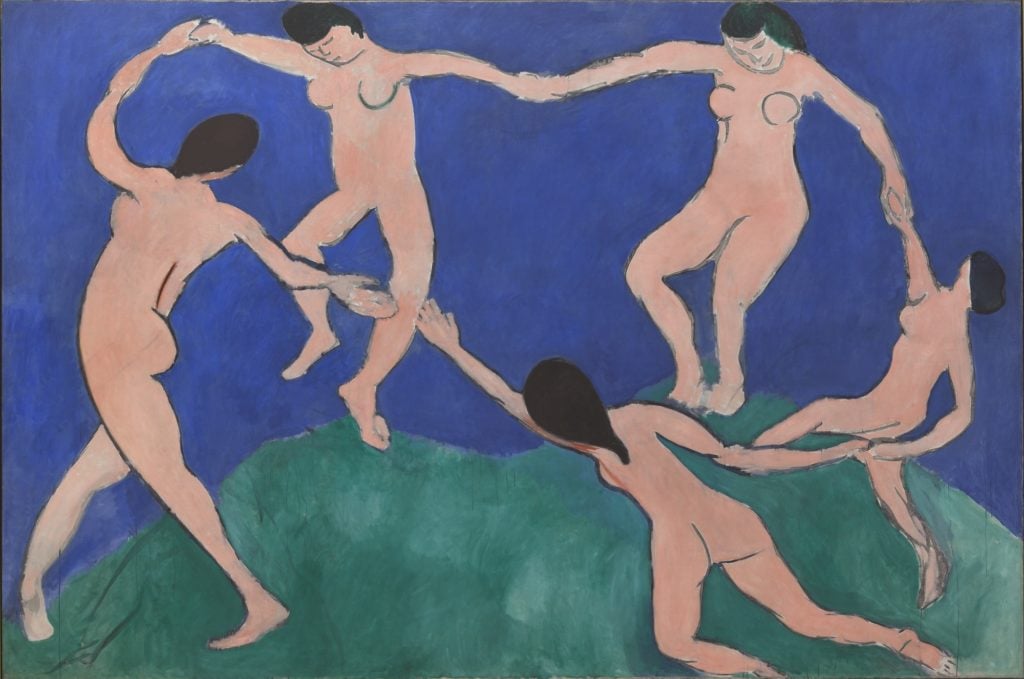
Henri Matisse, The Dance (1910).
Oh no! You’re at the new MoMA and your favorite Matisse is not where it used to be. What to do?
At least twice during an early preview of the new galleries, MoMA’s chief curator of painting and sculpture, Ann Temkin, was asked how lifelong New Yorkers and other MoMA denizens would know where to find their favorite artworks.
Noting that such information is available freely on the museum’s website, Temkin pointed out: “I’m not sure if everything that we’re doing now could have been done prior to the digital era. Having those resources as a counterpoint enables more flexibility. Everybody has this wealth of information that you didn’t have 20 years ago.”
And for any art lovers who remain skeptical of the rehang, Temkin had this piece of advice: “If you’re coming in and you know you want Warhol, you’re pretty safe to go to the mid-century floor, which has always been the fourth floor. Or if you want van Gogh, come to the fifth floor, which has always been the early part of the collection.”
—Eileen Kinsella

Robert Rauschenberg, Canyon (1959). at MoMA. Photo by Eileen Kinsella
For long periods of its history, MoMA has told the story of art qua art, presenting its permanent collection as a lesson in the power of formalism. Social and political concerns, which undoubtedly affect how artists work, have often been left out of the story.
But the new MoMA doesn’t shy away from those issues. One key work in the museum’s collection, Robert Rauschenberg’s Canyon (1959), was made after Hungarian-born American artist Sari Dienes supplied Rauschenberg with the stuffed bald eagle that famously adorns the artwork. Acquired by his legendary dealer, Ileanna Sonnabend, Canyon made its way to numerous international shows and retrospectives over the years—that is, until 1981, when US Fish and Wildlife agents spotted the bird carcass and notified Sonnabend that the object ran afoul of the 1940 Bald and Golden Eagle Protection Act. In order to retain possession, Sonnabend had to prove that the bird was killed and stuffed prior to 1940.
Rauschenberg came to the rescue. In a notarized statement, he recounted that in the 1950s, Dienes lifted the bird out of the trash after it had been thrown out following the death of a neighbor, who happened to have served in the US Calvary alongside Teddy Roosevelt. Satisfied with the explanation, the US government let Sonnabend keep the work, but under the strict condition that it could not be resold.
The story offers a succinct illustration of a fact we know to be true today: that are and politics are never far from one another.
—Eileen Kinsella
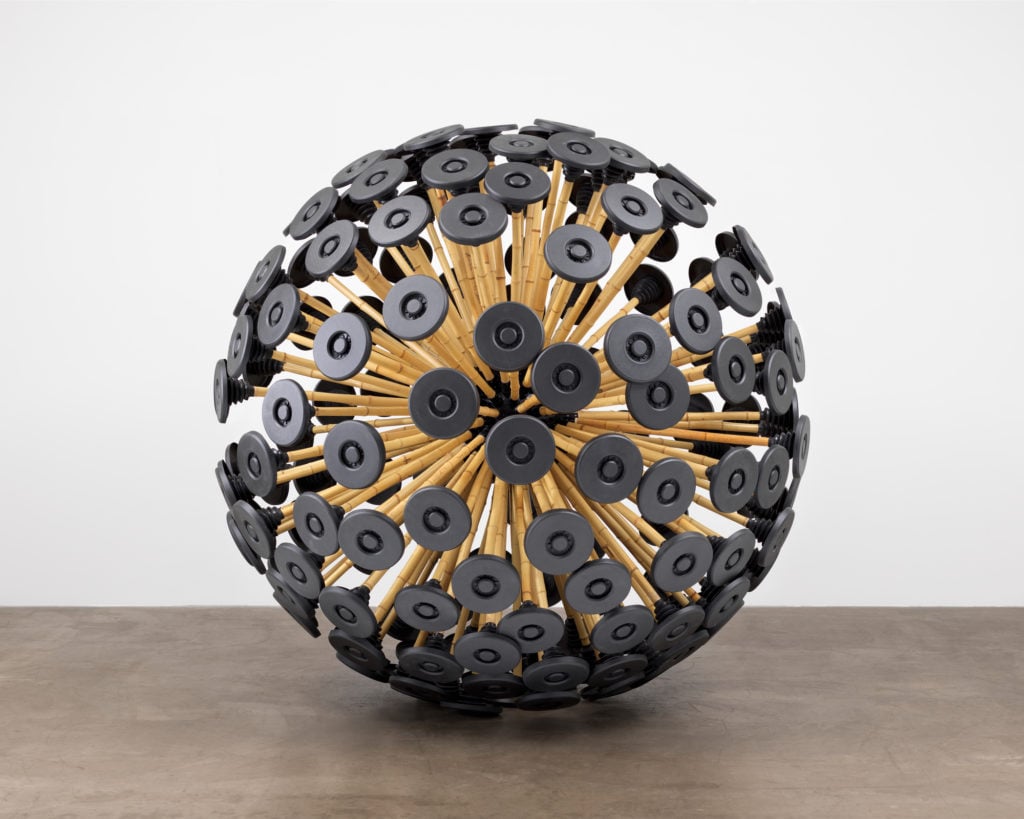
Massoud Hassani, Mine Kafon wind-powered deminer (2011). Photo courtesy of the Museum of Modern Art, New York, gift of the Contemporary Arts Council of the Museum of Modern Art.
One of the new MoMA’s chief selling points is its first-floor galleries, which will be free and open to members of the public not willing to shell out $25 for general admission.
In the north gallery, a show of works by Michael Armitage (through January 20, 2020) presents eight colorful paintings on lubugo, an alternate kind of canvas made from East African fig-tree bark. The show is presented in conjunction with the Studio Museum in Harlem (currently closed for an expansion of its own), and offers a wonderful showcase of the new direction MoMA has taken to elevate non-Western art, which has historically not been its focus.
Less immediately impactful is a design show titled “Energy” (through January 26, 2020). The centerpiece is Massoud Hassani’s Mine Kafon wind-powered deminer (2011), an ingenious device designed to detonate hidden land minds (it looks at first glance like a giant ball of plungers). It’s a brilliant piece of humanitarianism, but let’s be honest: this is not why most people come to MoMA.
So why not throw the public a bone and toss a Picasso into those free galleries? Maybe the museum doesn’t want to give away Vincent van Gogh’s Starry Night for free, but it would be nice if they offered something especially representative of the museum’s holdings.
—Sarah Cascone
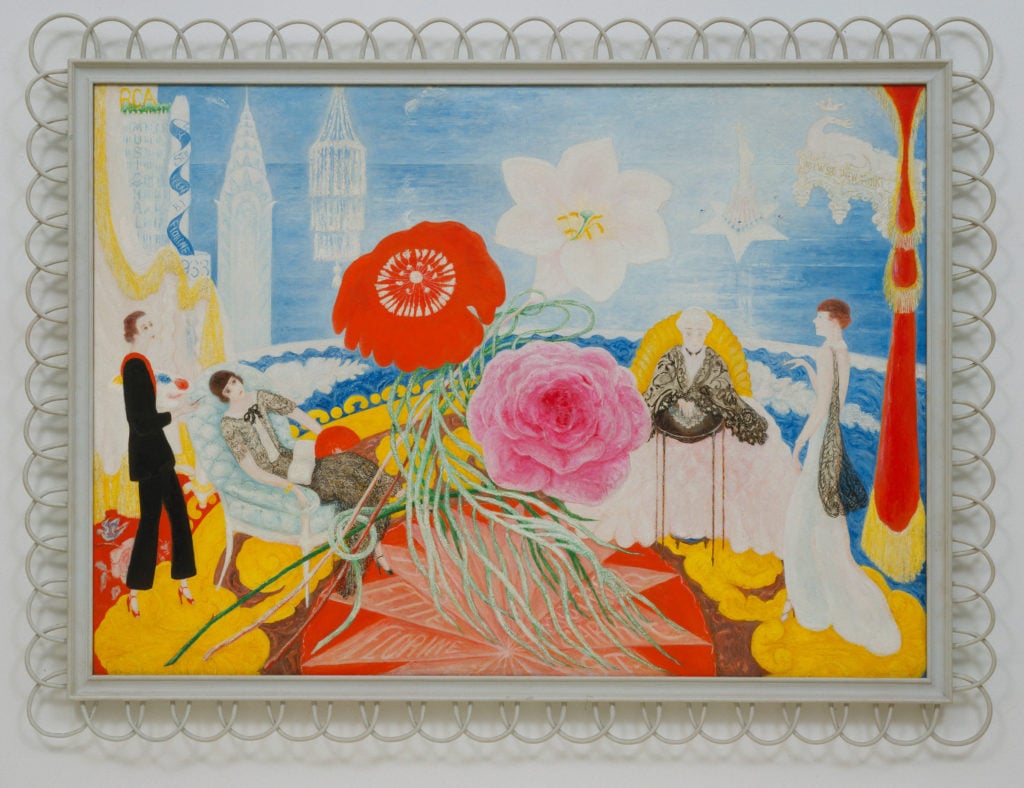
Florine Stettheimer, Family Portrait, II (1933). Courtesy of the Museum of Modern Art, gift of Ettie Stettheimer, 1956.
There’s no doubt about it: a room devoted to Florine Stettheimer in all her splendor would be a highlight of any modern art museum, even the country’s grandest. What a pleasure, then, that MoMA decided to bring out a few of the Jazz Age saloniste’s greatest hits, including the painting Stettheimer referred to as her masterpiece. That would be Family Portrait II (1933), a glowing Manhattan scene of the artist and her sisters in a sky-high canopy amid the era’s great metropolis, with its Art Deco monuments—the Chrysler Building, the skyscraper at Rockefeller Center, Radio City Music Hall—assembled behind in a Surrealistic blur.
And the museum upped the ante, complimenting Stettheimer’s genius with top-notch works by like-minded contemporaries and spiritual descendants. Alongside her painting are Frances Stark’s Chorus Line (2008), with three dancers echoing the ballet sketches of Stettheimer, and Jutta Koether’s Bitches Brew (2010), acquired for the museum through the Pat Hearn and Colin de Land Acquisition Fund
As for work from Stettheimer’s time, MoMA chose Fresh Window (1920), an installation by Rrose Sélavy, the female alter ego of Marcel Duchamp. Both of them—artist and fictional counterpart—were painted by Stettheimer for a 1923 stunner of a portrait. The room is a gem, a highlight even in this redesigned and expanded temple of the new.
—Nate Freeman